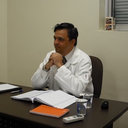Streptococcal acute pharyngitis.
Mots clés
Abstrait
Acute pharyngitis/tonsillitis, which is characterized by inflammation of the posterior pharynx and tonsils, is a common disease. Several viruses and bacteria can cause acute pharyngitis; however, Streptococcus pyogenes (also known as Lancefield group A β-hemolytic streptococci) is the only agent that requires an etiologic diagnosis and specific treatment. S. pyogenes is of major clinical importance because it can trigger post-infection systemic complications, acute rheumatic fever, and post-streptococcal glomerulonephritis. Symptom onset in streptococcal infection is usually abrupt and includes intense sore throat, fever, chills, malaise, headache, tender enlarged anterior cervical lymph nodes, and pharyngeal or tonsillar exudate. Cough, coryza, conjunctivitis, and diarrhea are uncommon, and their presence suggests a viral cause. A diagnosis of pharyngitis is supported by the patient's history and by the physical examination. Throat culture is the gold standard for diagnosing streptococcus pharyngitis. However, it has been underused in public health services because of its low availability and because of the 1- to 2-day delay in obtaining results. Rapid antigen detection tests have been used to detect S. pyogenes directly from throat swabs within minutes. Clinical scoring systems have been developed to predict the risk of S. pyogenes infection. The most commonly used scoring system is the modified Centor score. Acute S. pyogenes pharyngitis is often a self-limiting disease. Penicillins are the first-choice treatment. For patients with penicillin allergy, cephalosporins can be an acceptable alternative, although primary hypersensitivity to cephalosporins can occur. Another drug option is the macrolides. Future perspectives to prevent streptococcal pharyngitis and post-infection systemic complications include the development of an anti-Streptococcus pyogenes vaccine.


